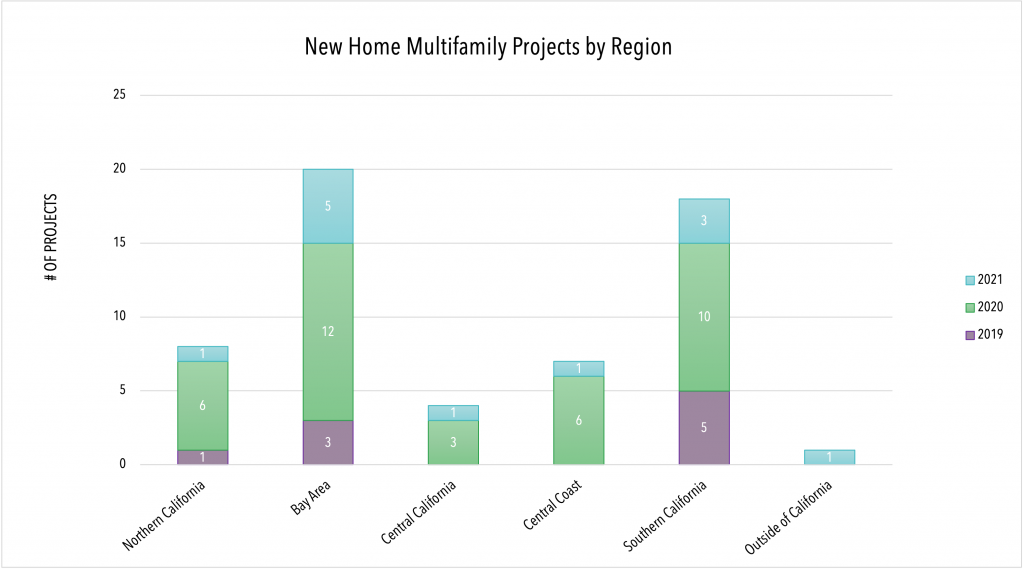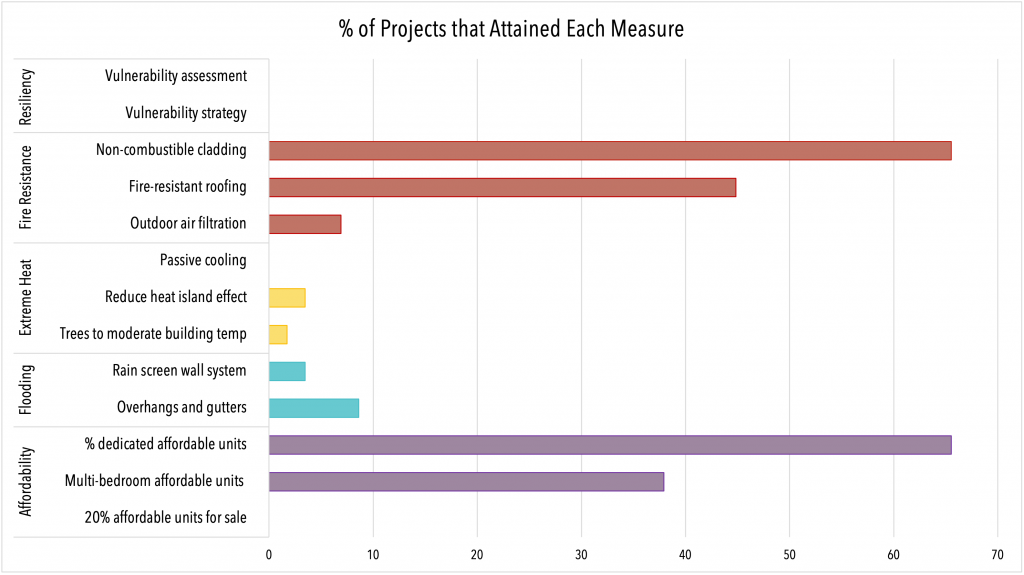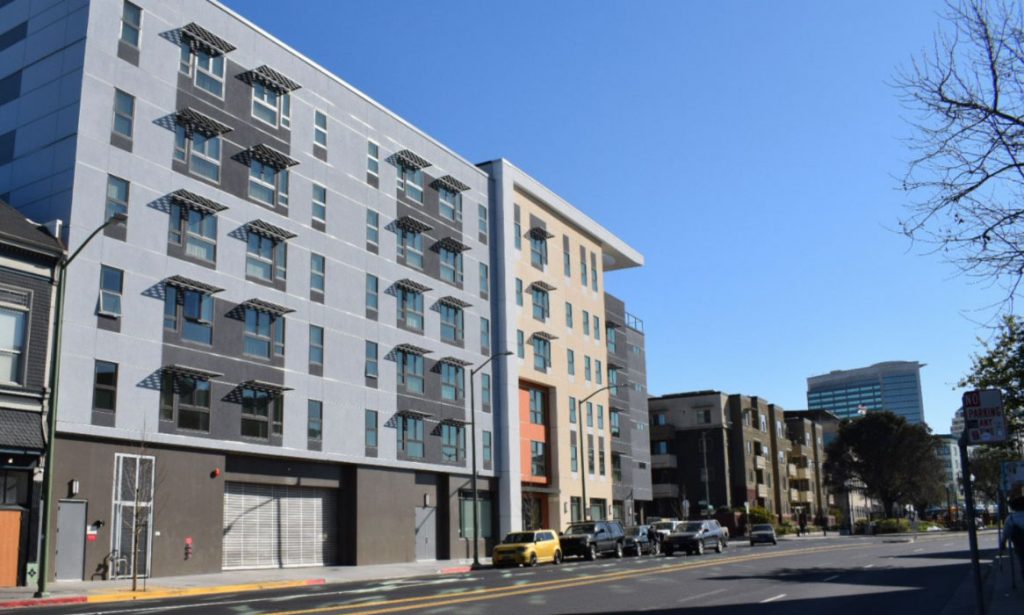As California’s extreme weather events become more frequent and the housing crisis more pressing, building resilient and affordable homes is top of mind for residential developers. GreenPoint Rated (GPR)’s framework for new home multifamily construction offers recognition for designing with these concepts in mind, so we analyzed certified projects to understand how the affordability and resiliency measures have been used over the last three years.
For Californians, the risk of devastating wildfires is ever-present. According to the Environmental Defense Fund (EDF), today’s wildfire seasons are three-and-a-half months longer on average than they were decades ago, and they’re only becoming more intense as forests continue to dry out. The state is also experiencing a series of major heat waves due to the drought; as soils lose moisture, the heat that would usually evaporate that moisture instead goes directly into the atmosphere. Having a resilient home one built to withstand extreme weather events like heat waves and wildfires—has become a critical adaptation in the face of the state’s changing climate.
At the same time, California has another major problem: a lack of affordable housing, particularly when it comes to rentals. According to the California Housing Partnership’s housing needs report from last month, Alameda County renters would need to earn approximately $42 an hour almost three times Oakland’s minimum wage to afford average rent prices of $2,195 a month.
So long as these problems persist, it is essential that residential developers especially those in the multifamily housing sector—build with resilience and affordability in mind.
GreenPoint Rated (GPR) currently offers recognition and guidance for developers who pursue resiliency and affordability measures, something not commonly seen in green certification programs. Just by including these measures as options, GPR broadens the definition of what green building encompasses and encourages building design that adapts to the realities of climate change and the housing ecosystem.
To identify trends in how these measures have been utilized over the last three years, we looked solely at projects certified in the new home multifamily (NHMF) category.

The measures
All told, GPR offers ten resiliency measures and three affordability measures. The resiliency measures are split into four categories general resiliency, fire resistance, extreme heat, and flooding while affordability is a category all its own.
In general, the fire resistance and affordability categories had the highest attainment across all NHMF projects. You can see the complete list of measures and attainment breakdown in the following chart:

Five key observations from the data
From studying the data, we were able to identify five key trends. Here are our observations and some possible explanations for them:
Project spotlights
Two projects in the past three years have gone above and beyond with regards to attainment: the Embark Apartments project in Oakland and the Metro Crossing – Warm Springs Apartment project in Fremont, both of which attained all three fire resistance measures and the first two affordability measures.

The Embark Apartments, completed in February 2020, were created by affordable housing development organization Resources for Community Development (RCD) and partially funded by the CA Veterans Housing and Homeless Prevention Program (VHHP). The complex was developed with affordability as a key focus, with the overall goal of providing veterans and their families with affordable rental options. Exactly half of the units are set aside for veterans who are homeless, and to comply with the LIHTC, both eligibility and rent are determined by income.
Jennifer Love, the GreenPoint Rater for the Embark Apartments, spoke about how the focus on veterans drove the project to prioritize affordability.
“The two go hand in hand. This was a decision made at the developer level—that that was the community that they wanted to serve for this project,” she said. “Once you’re serving a certain population, you have to meet the affordability criteria for that funding source.”
The Embark Apartments project is also the only one to offer 20% of its units for sale at 120% AMI or less—something rare given the high median sales price of condos and townhomes in California. According to the California Association of Realtors (CAR), the median sales price for condos in Alameda last month was $727,500— almost 6 times greater than the area’s median family income.
With regards to the fire resistance measures, Love noted that building apartments to be resilient is always a logical move.
“In terms of durability, I would say that those are measures that [raters] just always push for It’s pretty straightforward. These materials are widely available, they’re largely cost-effective in some cases, it’s not even necessarily pushing [developers] too far beyond what they’re already planning.”
The Metro Crossing project represents a much more standard multifamily housing development, but still meets the criteria for all fire resistance measures and two of the three affordability measures: offering at least 50% of its units at an income-restricted rate and making sure 15% of those units have at least three bedrooms. While almost entirely different from the Embark Apartments in its approach, this development demonstrates how easily affordability and resiliency can be integrated into a project’s design, even without being essential to the overall concept.
As more and more multifamily projects incorporate these measures, adopting them will become increasingly routine, and other green certification programs will start to work similar measures into their frameworks. This will be one of the key ways that we are able to bring resiliency and affordability into the residential building mainstream, allowing us to meet the climate and housing needs of the moment.
Wondering if there are any GPR-certified homes in your area? Check out this map to see projects by location, including the other multifamily projects we analyzed for this blog post.
GreenPoint Rated is a credible and accessible pathway to prove homes are built to trusted environmental standards.
[email protected]
Mon – Fri, 9am-5pm